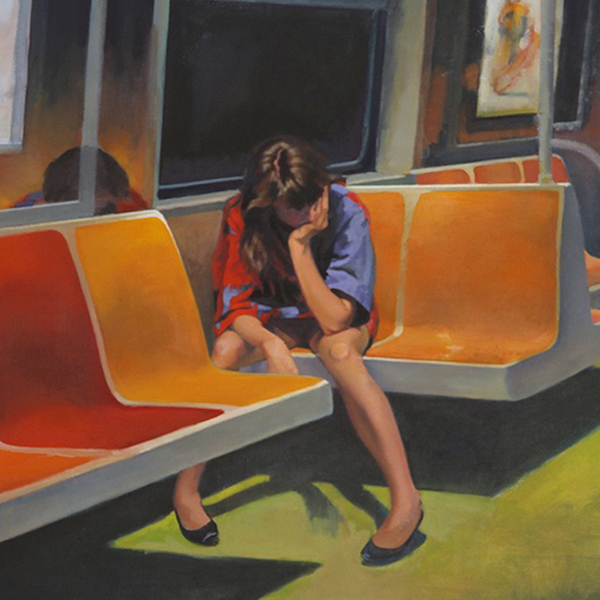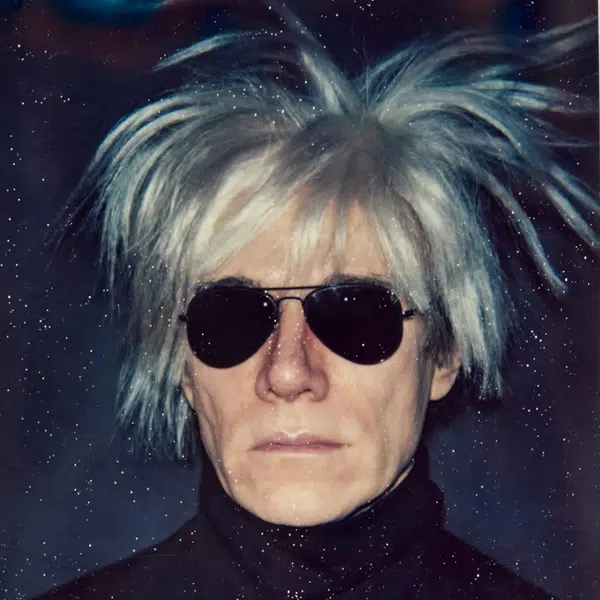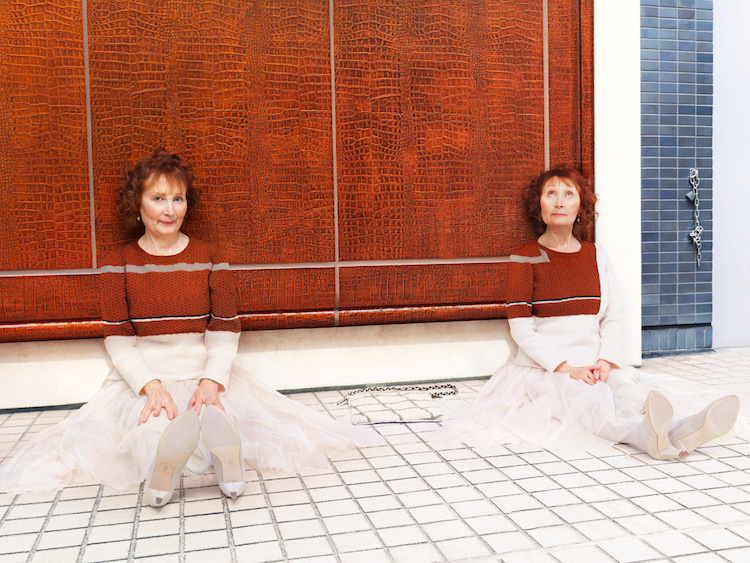
This post may contain affiliate links. If you make a purchase, My Modern Met may earn an affiliate commission. Please read our disclosure for more info.
When you hear the word camouflage, visions of green and brown military uniforms might come to mind; but, photographer Joseph Ford and knitter Nina Dodd have a different idea of wearable concealment. For the last several years, they worked on their collaborative project called Invisible Jumpers, in which Dodd would knit a garment that blends in with a chosen environment and then Ford would photograph the wearer—a person, animal, or piece of fruit—blending in with that particular setting. Often, this involved a subject disappearing into a space they were already personally connected to, such as a farmer wearing a spotted shirt and standing among his cows.
The knitted camouflage is a playful twist on an optical illusion that’s been crafted through Ford’s meticulous attention to detail. Because he and Dodd are able to achieve such seamless fusions, it speaks to just how precarious illusions like those in Invisible Jumpers can be. If someone were to move just an inch, the entire image would begin to unravel and the chameleon-like effect would be gone.
Ford and Dodd’s project has been made into a book of the same name published by Hoxton Mini Press. You can buy the publication from Hoxton’s website or pick up a copy on Amazon.
We had the chance to speak with Ford about the book and the intensive process of creating the duo's wearable optical illusions. Scroll down for My Modern Met's exclusive interview.
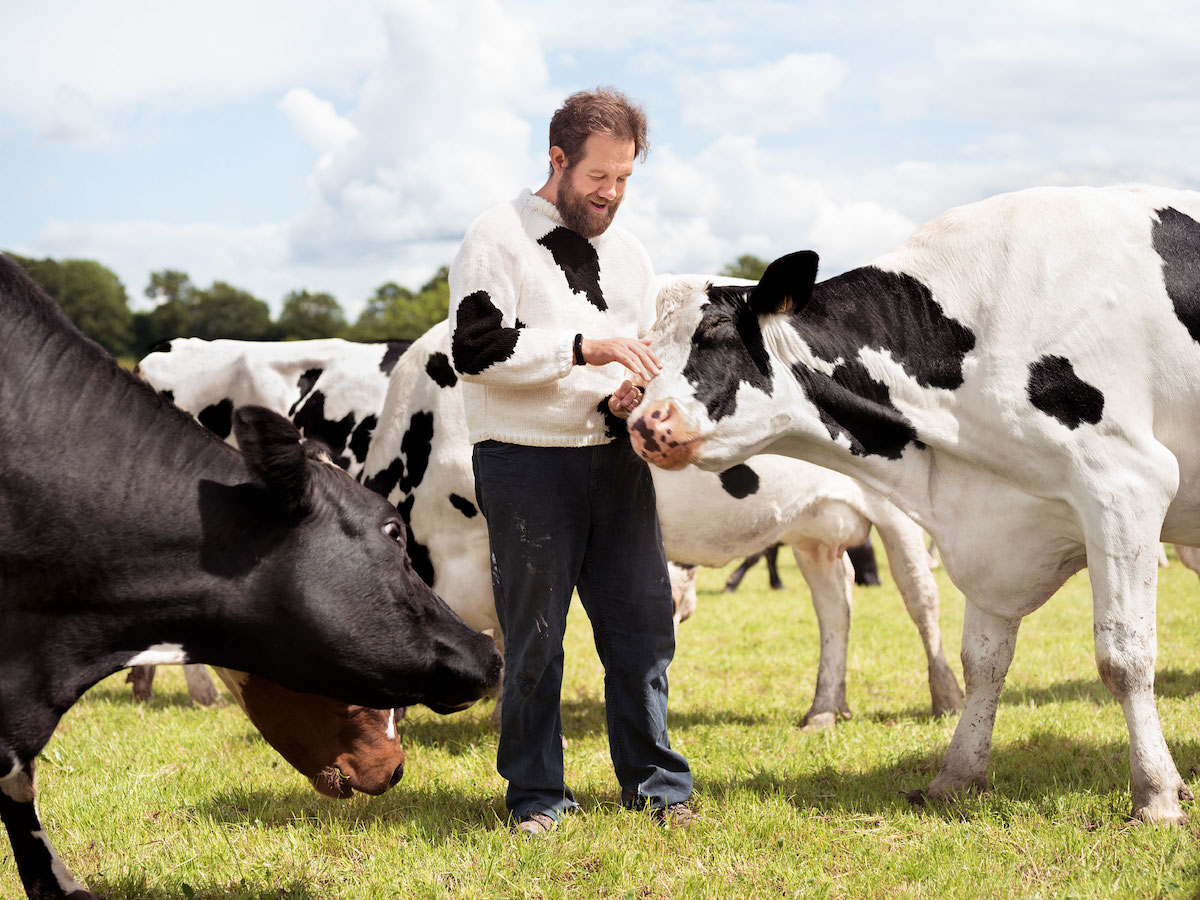
What was the initial idea for this project?
I love optical illusions, whether it be with changing scales or with blending objects together. When I began this project I had been working for several years on a series of diptychs that matched an aerial landscape on one side with a piece of clothing or a detail of a garment on the other side.
After several years of shooting still life, I was looking for a way to continue to explore optical illusions with a human element and started working with a knitter, Nina Dodd. She loves buses and inventive knitting and created a jumper based on the seat covers of buses. We found an eye-catching model and photographed him on a bus.
When you started it, did you anticipate it being such an undertaking?
Absolutely didn’t imagine it being such an undertaking! Over four years, I shot the occasional picture, making seven in total. Then for the last year, I’ve basically been working full-time on this project.
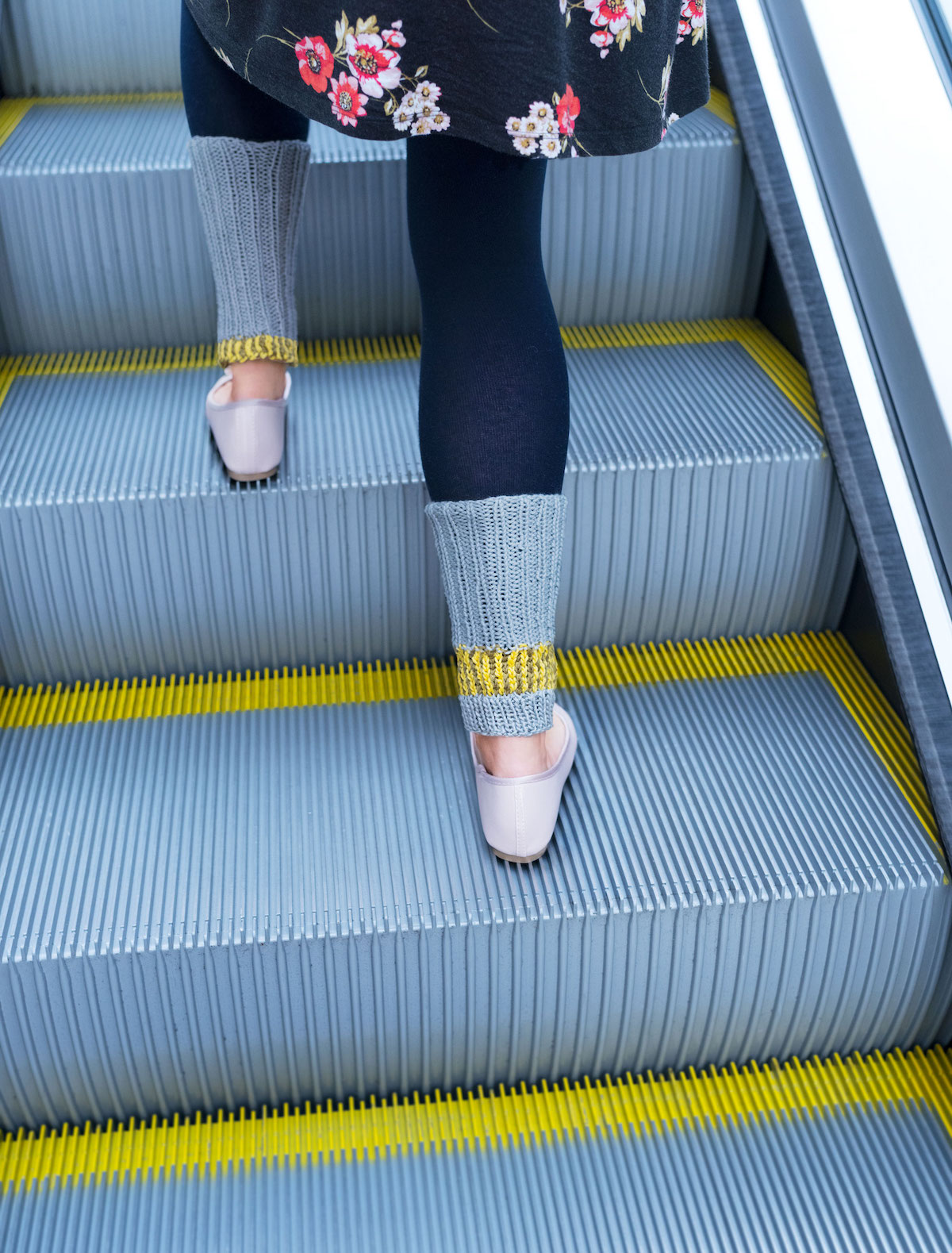
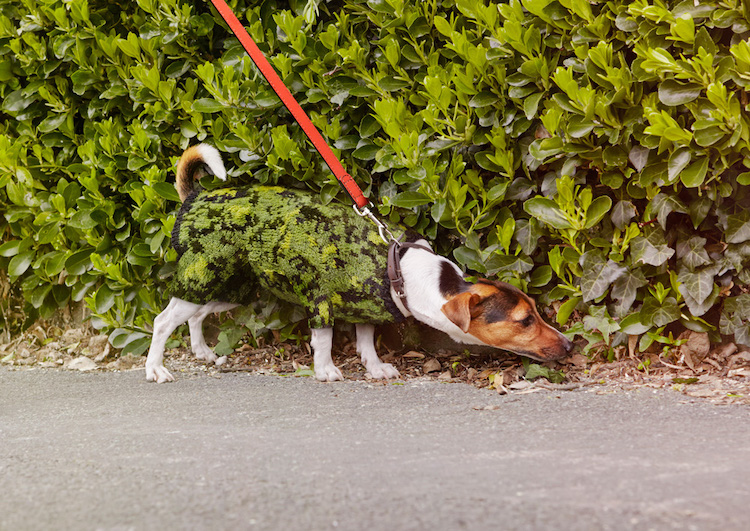
Can you walk us through the process, from the creation of the sweater to the final photograph?
Each of these pictures has taken me weeks to research and plan. I have generally begun with an idea: “Could I photograph someone blending into cherry blossom?” Then I go looking for the perfect location. In this case, it took several days' research to find the right trees: big enough to take the weight of a swing with a branch at the right height, and in a place where there wouldn’t be too many other distracting elements in the shot.
The locations have to be eye-catching but simple enough to be able to be knitted. They also have to be places that aren’t going to change too fast, as the knitting takes a few weeks. It would have been terrible to prepare a sweater and then not be able to shoot because the location has been demolished.
Once I’ve found the location, I photograph someone standing where I would like the model to be in the final picture. I draw over this scouting photograph and annotate the picture with different colors and patterns so Nina can plan how to knit. Often there are 10 or 12 different shades of yarn in a single picture, and up to 24 balls of wool at any one time for the more complicated designs. The choice of yarn has varied according to the background: the blue running track had a shiny surface so we found a fine cotton with a sheen to it.

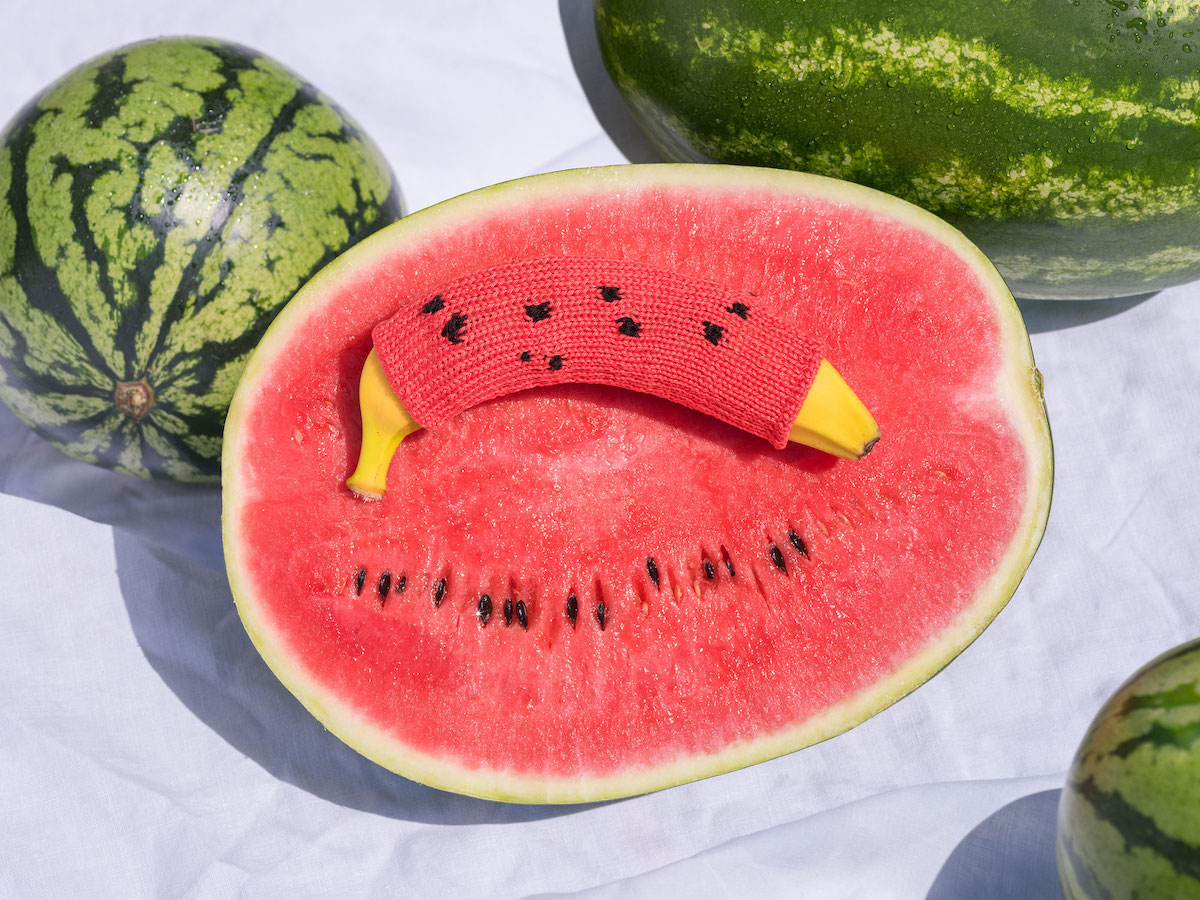
What fascinates you about optical illusions?
It’s very satisfying to create images that make the viewer take a second glance, where there are multiple layers to look at.
How do they inform your overall photography?
I enjoy creating images that challenge the viewer, making us question our initial perception.
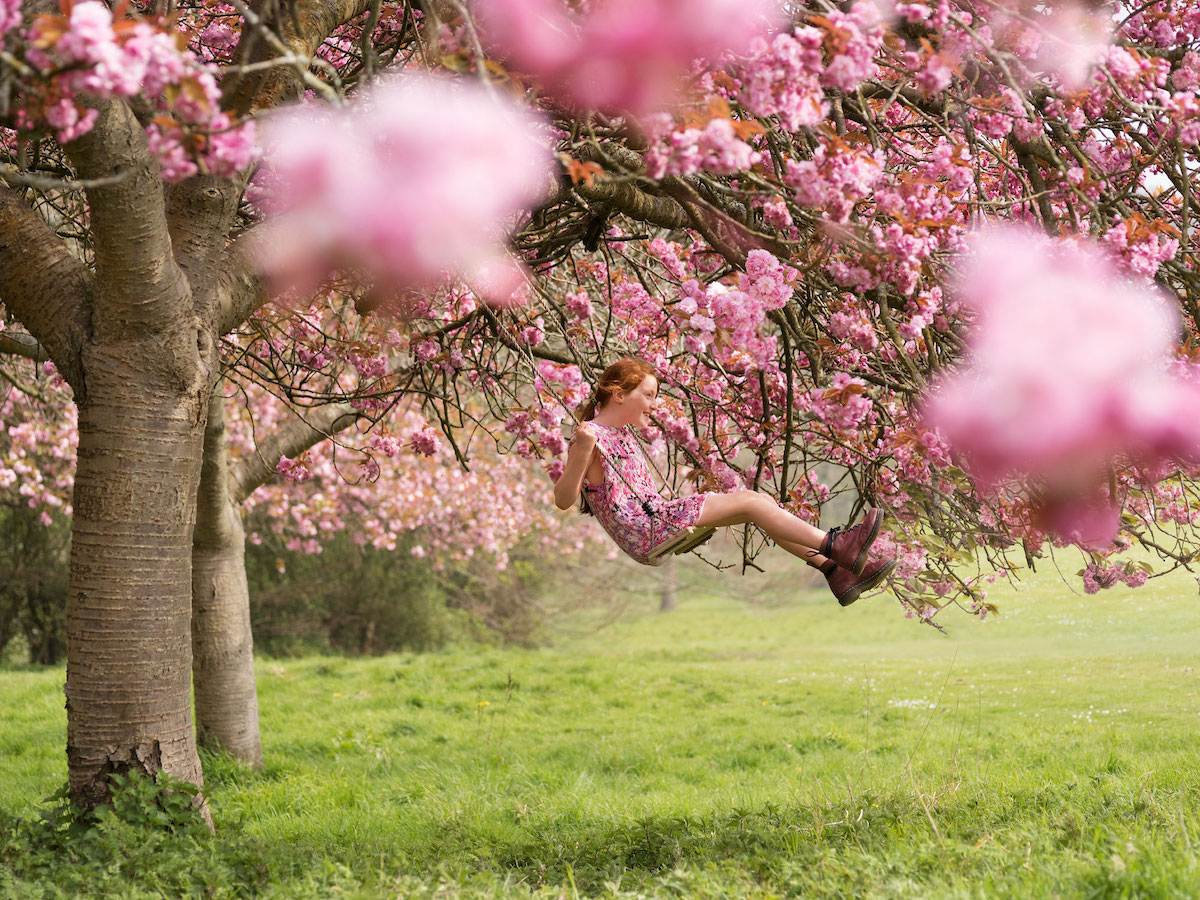
Many of these sweaters look really intricate. What was one of the more challenging garments for Nina to knit?
The hardest to knit was the cherry tree dress. This had 24 balls of wool being used at the same time and was very complicated as the random nature of leaf and flower patterns meant that Nina had to change colors every few stitches.
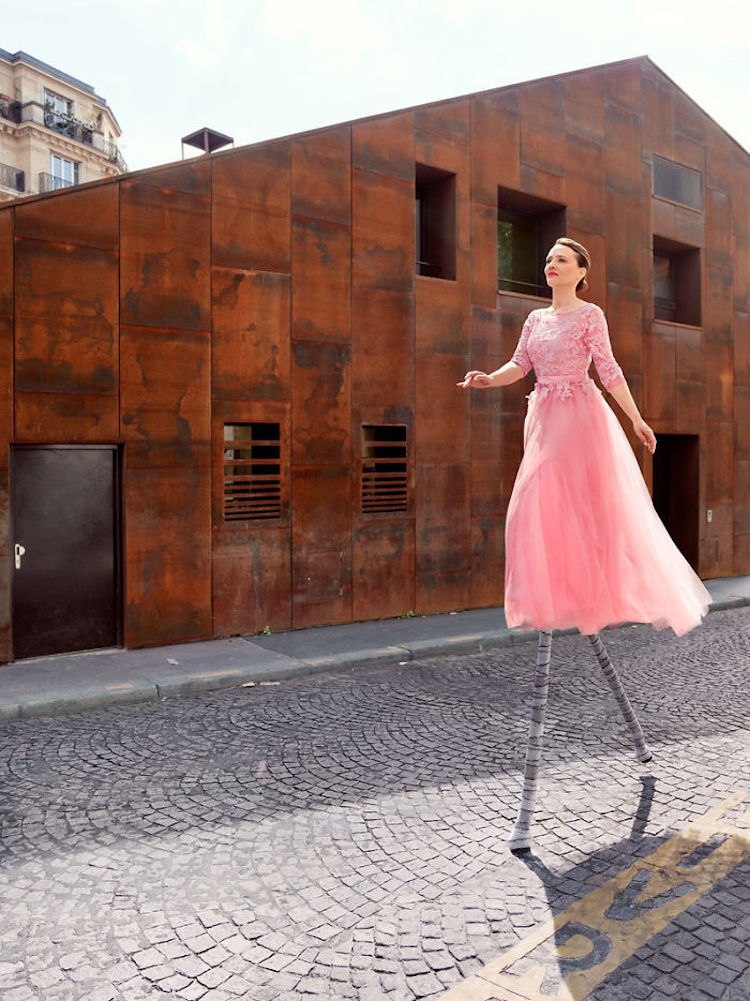
What was the hardest for you to photograph?
One of the hardest to photograph was the lady on stilts in the street. Unfortunately, when I went to check the location out the day before shooting I discovered that the lack of traffic the first time I visited must have been a fluke. It was bumper to bumper throughout the day. I went back to shoot the next day with several assistants, who managed to persuade the motorists to leave a space in the traffic every now and then so we could shoot while Marianne strode up and down the street on the slippery cobbles. Anyone who has ever driven in Paris will be able to imagine how hard that was.
Shortly after we started, a police car came past. I assumed that was the end of the shoot: we were certainly creating a public disturbance and impeding the safe flow of traffic, but the driver gave us a grin, took a picture of the woman on stilts and drove on by.
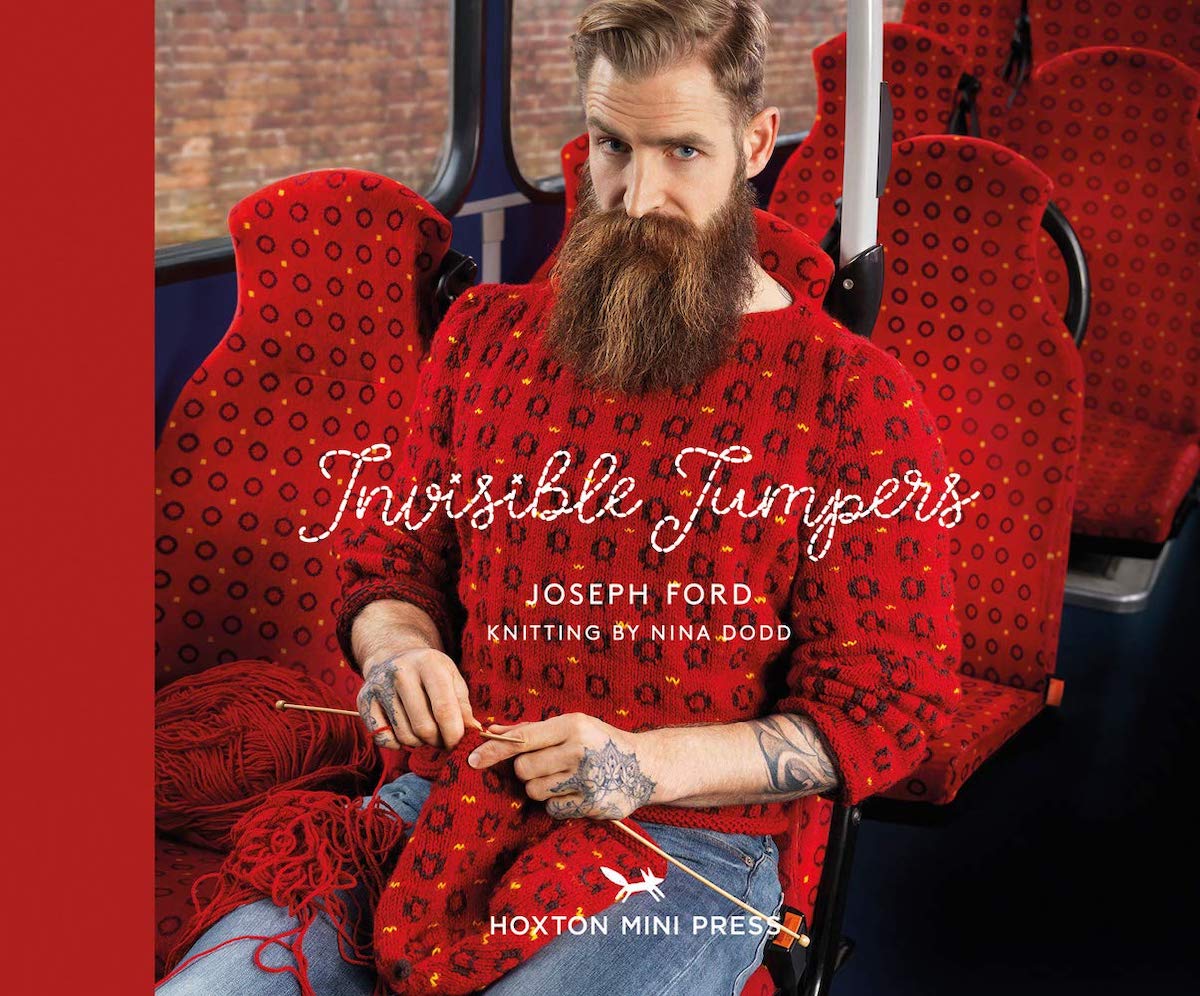
Tell us more about the book Invisible Jumpers. What can readers expect from it?
Lots of laughs. There is a broad range of images and a large behind the scenes section, with pictures showing how the images were created and discussing the challenges of photographing and knitting a project like this.
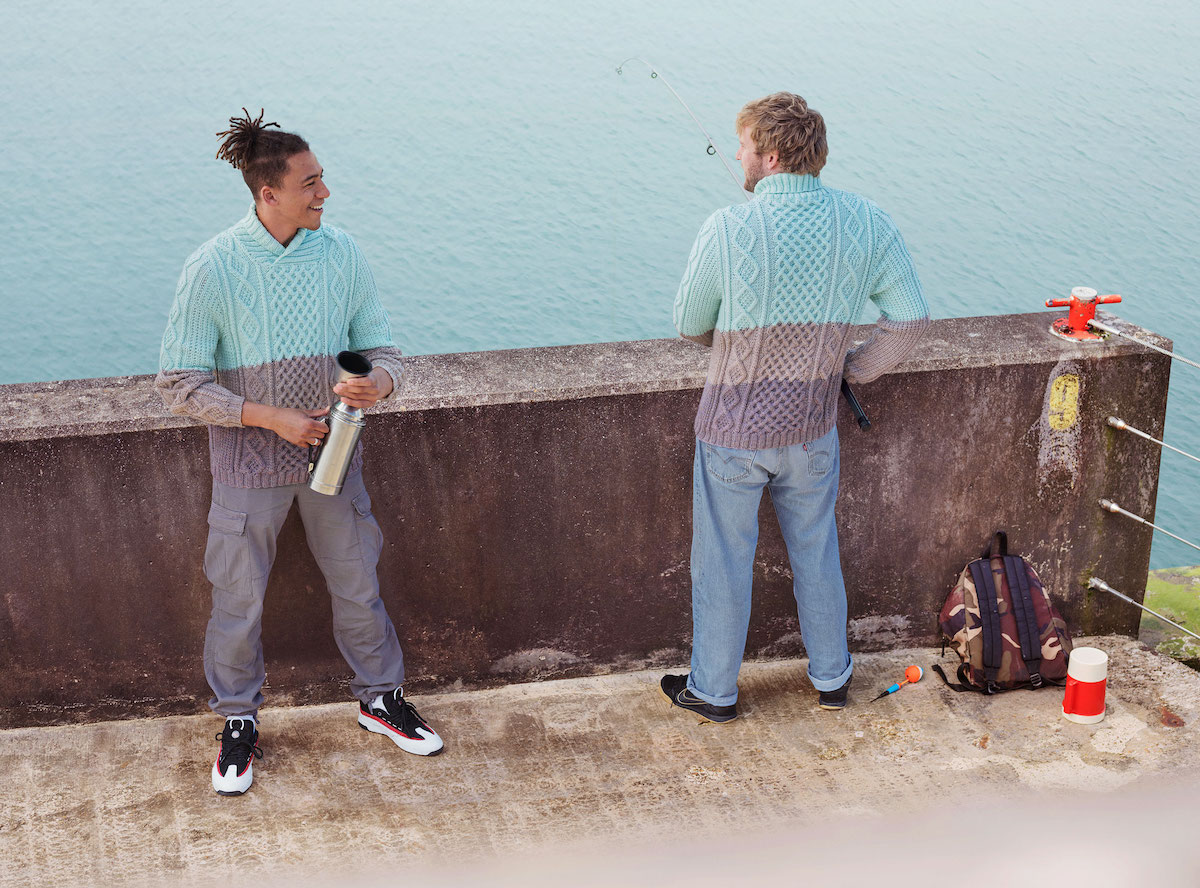
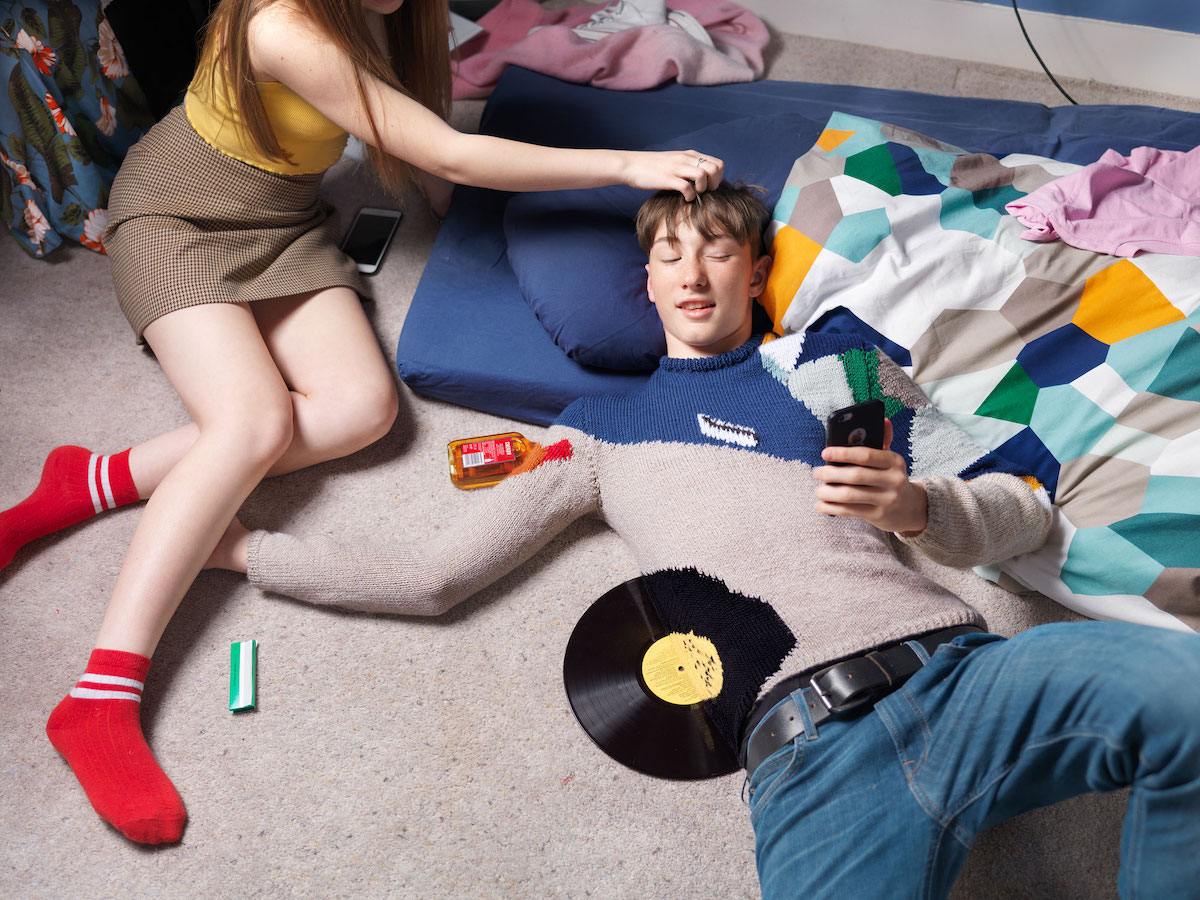
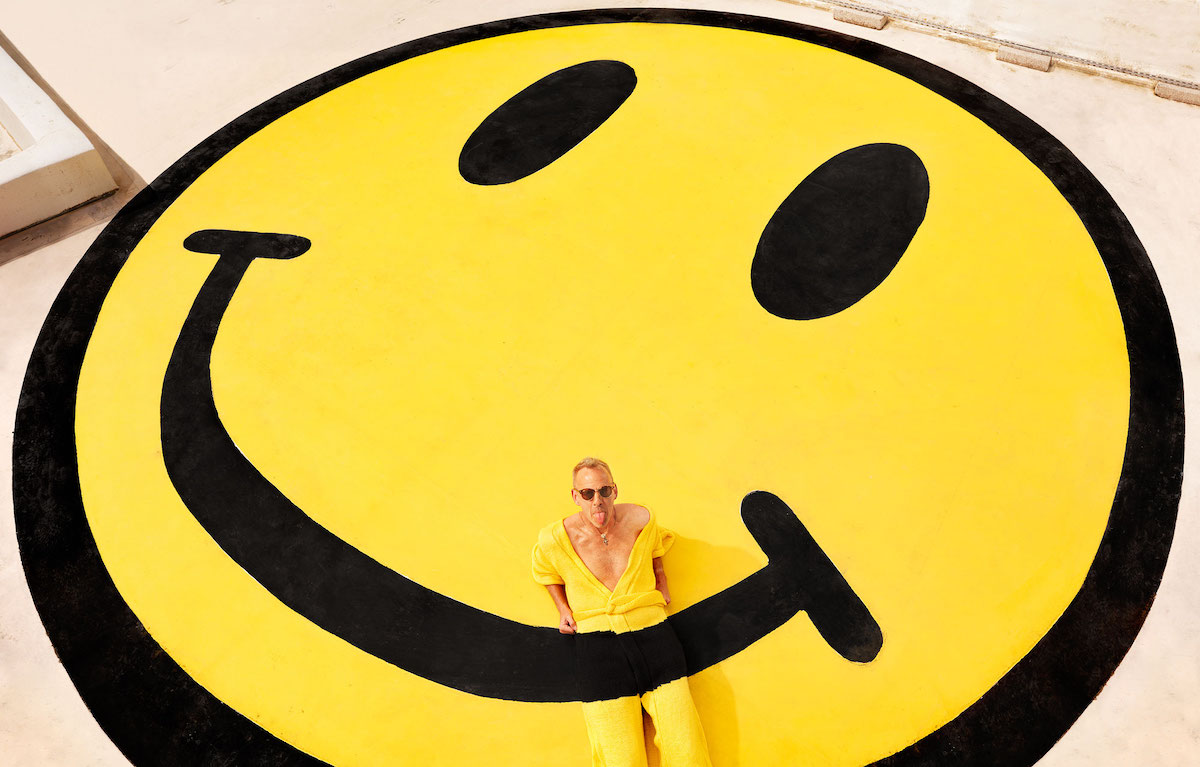
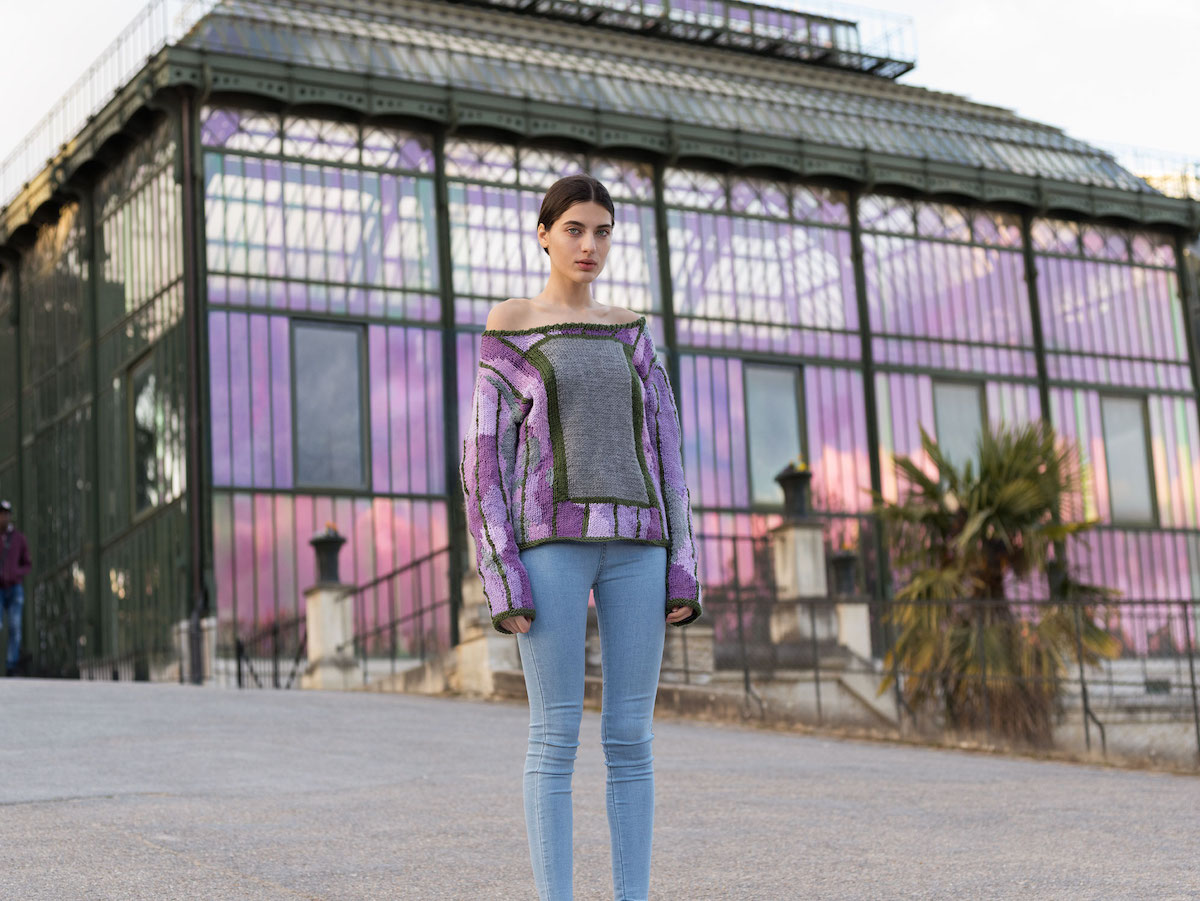
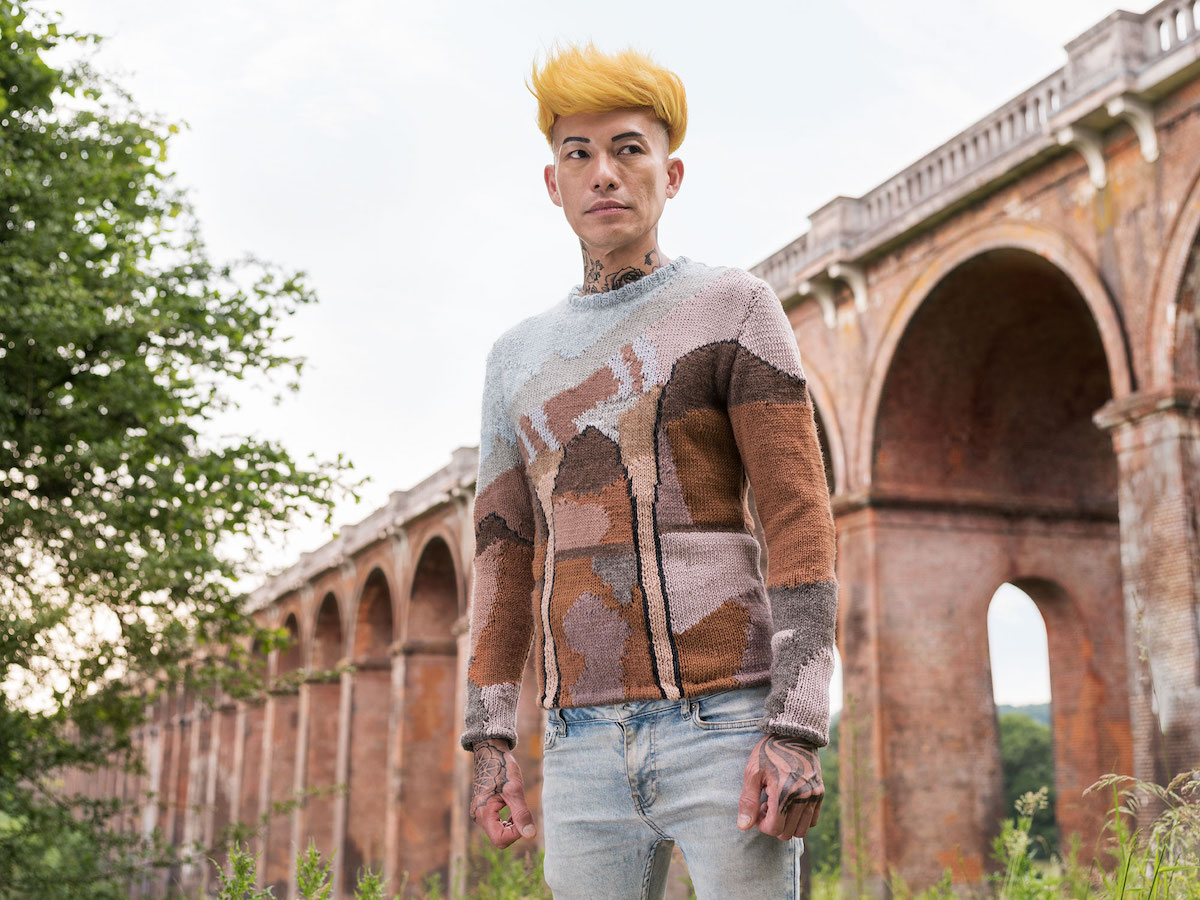
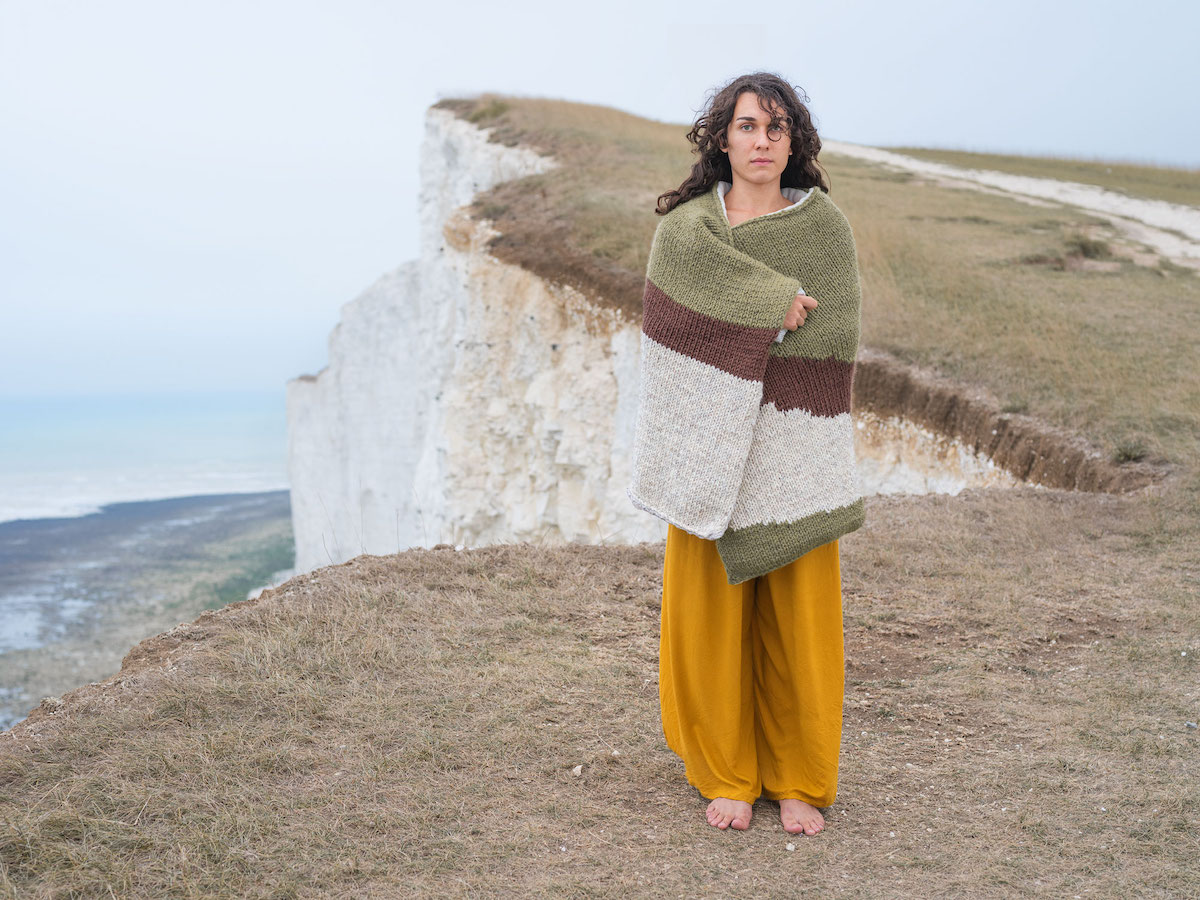
Joseph Ford: Website | Facebook | Instagram | Twitter
Nina Dodd: Website | Facebook
My Modern Met granted permission to feature photos by Joseph Ford.
Related Articles:
Guy Knits Sweaters of Places, Then Wears Them in Front of the Real Place
Woman Knits Tiny Wool Sweaters to Keep Chickens Warm
Artist Crochets Amazing Life-Size Replica of Local Woman Walking Her Dog




















































































